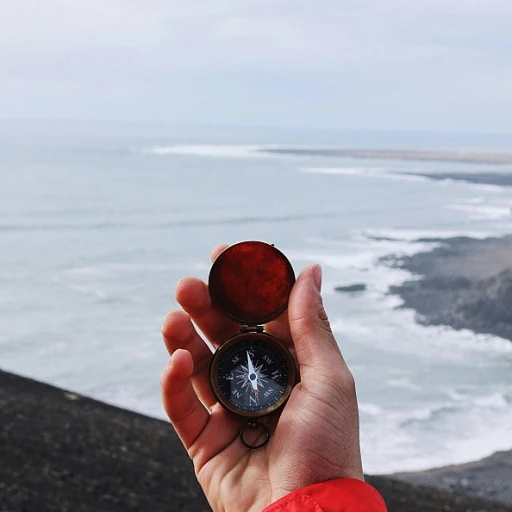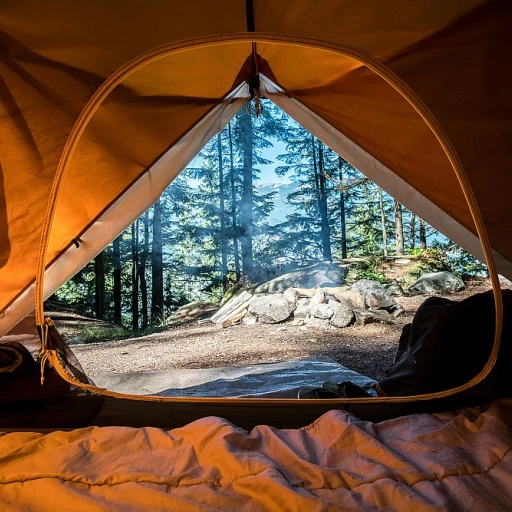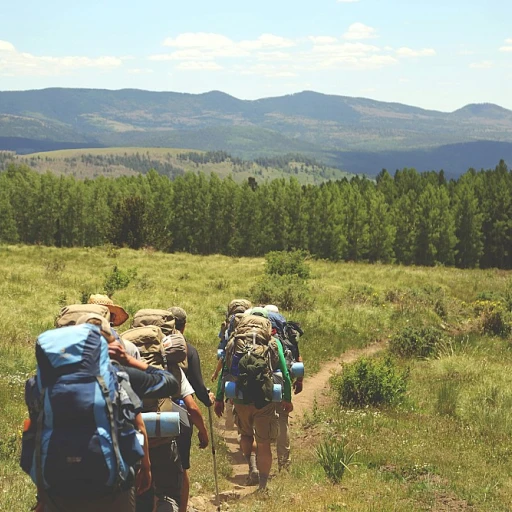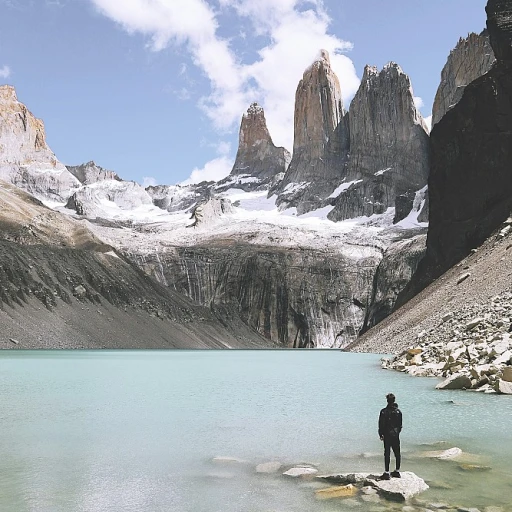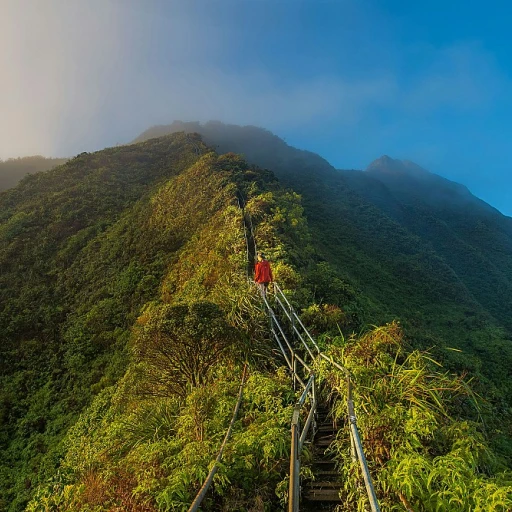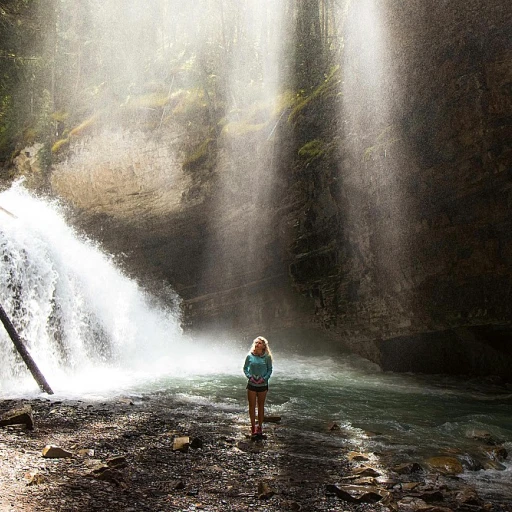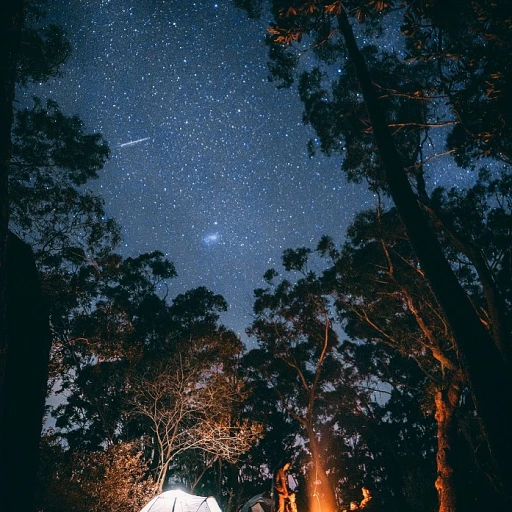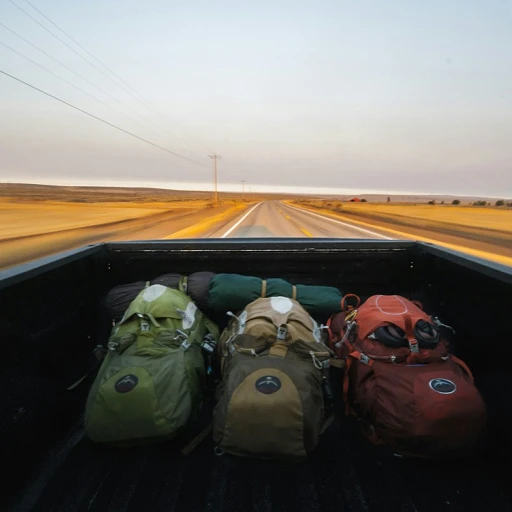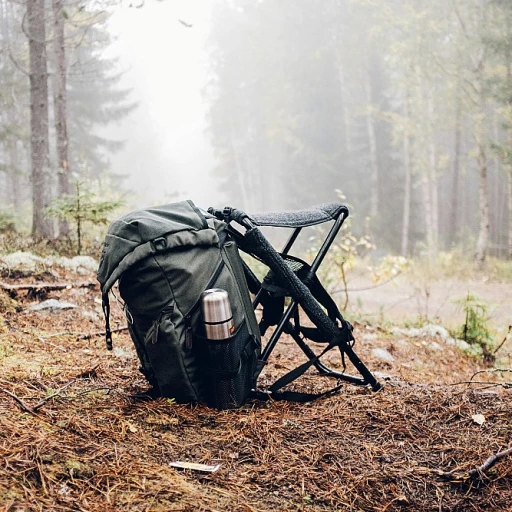
Understanding Wyoming's Diverse Terrain
Exploring Wyoming's Varied Landscapes
Wyoming is a treasure trove for outdoor enthusiasts, offering a diverse range of terrains that cater to every hiker's dream. From the rugged peaks of the Grand Teton to the expansive plains of Yellowstone National Park, the state is a haven for those seeking adventure and breathtaking views.
The Teton Range is a highlight for many, with its dramatic mountain landscapes and challenging trails. The Grand Teton National Park offers some of the best hikes in the region, including the popular Jenny Lake Trail and the scenic Cascade Canyon. These trails provide hikers with stunning views of alpine lakes and towering peaks.
For those looking to explore Wyoming's high-altitude environments, the Wind River Range is a must-visit. Known for its remote wilderness and the iconic Cirque of the Towers, this area offers a range of trails that vary in difficulty and distance. The elevation gain in this region can be challenging, but the panoramic views are worth every step.
In contrast, the Medicine Bow National Forest offers a different kind of beauty with its lush forests and serene lakes. The Snowy Range within the forest is perfect for those seeking a more tranquil hiking experience.
Whether you're trekking through the canyons or looping around pristine lakes, Wyoming's trails promise unforgettable experiences. For a detailed guide on the top 10 hikes in Wyoming, be sure to explore our comprehensive list.
Essential Gear for Wyoming Hikes
Gear Up for Wyoming's Trails
Embarking on a hike in Wyoming's diverse landscapes requires the right gear to ensure both safety and enjoyment. Whether you're exploring the rugged terrains of the Grand Teton National Park or the serene paths around Jenny Lake, being well-prepared can make all the difference.
Footwear: Your Foundation
Choosing the right hiking boots is crucial. With trails ranging from the gentle slopes of Taggart Lake to the challenging ascents of the Cirque Towers, your footwear should provide ample support and grip. Consider boots with good ankle support and waterproofing, especially for trails with unpredictable weather conditions.
Clothing: Layer Up
Wyoming's weather can be as varied as its terrain. Dressing in layers is essential, allowing you to adjust to the changing temperatures as you gain elevation on hikes like the Cascade Canyon. Breathable, moisture-wicking fabrics are recommended to keep you comfortable throughout your journey.
Navigation Tools
While many trails in Wyoming, such as those in Yellowstone National Park, are well-marked, having a reliable map and compass is always wise. GPS devices can be helpful, but don't solely rely on them, as signal can be spotty in remote areas.
Hydration and Nutrition
Staying hydrated is vital, especially when tackling longer trails like the Wind River Range. Carry enough water and consider a filtration system if you plan to refill from natural sources. High-energy snacks will keep you fueled, particularly on hikes with significant elevation gain.
Safety and Emergency Gear
Always pack a basic first-aid kit and a multi-tool. A whistle and a flashlight can be lifesavers in emergencies. For those venturing into more isolated areas, like the Medicine Bow National Forest, a personal locator beacon is a wise investment.
For more detailed insights on preparing for Wyoming's trails, check out this guide on conquering the trails to Gannett Peak.
Safety Tips for Hiking in Wyoming
Stay Prepared for Wyoming's Unique Challenges
Hiking in Wyoming offers breathtaking views and diverse trails, but it also presents unique challenges that require careful preparation. Whether you're exploring the rugged terrains of the Grand Teton National Park or the serene paths around Jenny Lake, safety should always be a priority.
Weather Awareness
Wyoming's weather can be unpredictable, especially in the mountainous regions. Always check the forecast before heading out and be prepared for sudden changes. Carrying layers is essential, as temperatures can vary significantly with elevation gain. For more detailed weather insights, consider exploring resources on Yellowstone National Park weather.
Wildlife Encounters
Wyoming is home to diverse wildlife, including bears and moose. When hiking in areas like the Wind River Range or Yellowstone National Park, it's crucial to stay alert and make noise to avoid surprising animals. Carry bear spray and know how to use it effectively.
Trail Navigation
Many trails, such as those in the Medicine Bow National Forest or the Cascade Canyon, can be remote and challenging to navigate. Always carry a map and compass, and consider a GPS device for added security. Stick to marked trails to minimize the risk of getting lost.
Hydration and Nutrition
With hikes ranging from short loops to longer treks like the Cirque Towers, staying hydrated is vital. Carry enough water and consider a filtration system for longer distances. Pack high-energy snacks to maintain your stamina throughout the hike.
Altitude Considerations
The impact of altitude on hiking performance is significant, especially in high-elevation areas like Jackson Hole. Acclimatize gradually and be aware of symptoms of altitude sickness. If you're planning to tackle challenging peaks, ensure you're physically prepared for the demands of the elevation.
By keeping these safety tips in mind, you can enjoy the best hikes Wyoming has to offer while ensuring a safe and memorable experience.
Top 10 Hikes in Wyoming
Exploring Wyoming's Premier Trails
Wyoming offers some of the most breathtaking hiking experiences in the United States. With its diverse terrain, from the rugged peaks of the Teton Range to the expansive vistas of Yellowstone National Park, there's a trail for every type of hiker. Here are the top 10 hikes that showcase the best of Wyoming's natural beauty.
1. Cascade Canyon Trail
Located in Grand Teton National Park, this trail offers stunning views of the Teton Range. The hike begins at Jenny Lake and takes you through lush forests and along the banks of a pristine river. The round-trip distance is approximately 9 miles with a moderate elevation gain, making it accessible for most hikers.
2. Taggart Lake Loop
This 3-mile loop trail is perfect for those looking for a shorter hike with rewarding views. The trail meanders through meadows and forests, offering glimpses of the majestic Taggart Lake and the surrounding mountains.
3. Cirque of the Towers
For the more adventurous, the Cirque of the Towers in the Wind River Range offers a challenging yet rewarding experience. This hike features dramatic granite peaks and alpine lakes, with a distance of about 18 miles round trip. The elevation gain is significant, so proper preparation is essential.
4. Yellowstone's Fairy Falls
One of the best hikes in Yellowstone National Park, the Fairy Falls trail is a 5-mile round trip that takes you to one of the park's most beautiful waterfalls. The trail is relatively flat, making it suitable for families and casual hikers.
5. Medicine Bow Peak
Standing at over 12,000 feet, Medicine Bow Peak offers panoramic views of the surrounding national forest. The hike is about 7 miles round trip with a steep elevation gain, providing a rewarding challenge for experienced hikers.
6. Grand Teton's Paintbrush Canyon
This trail offers a strenuous yet spectacular journey through wildflower-filled meadows and past glacial lakes. The loop is approximately 20 miles with significant elevation changes, making it a favorite among seasoned hikers.
7. Jenny Lake Trail
Perfect for a leisurely day hike, the Jenny Lake Trail offers stunning views of the lake and the surrounding peaks. The loop is about 7 miles and relatively flat, making it accessible for most hikers.
8. Yellowstone's Mount Washburn
Offering one of the best panoramic views in Yellowstone, the Mount Washburn trail is a 6-mile round trip with a moderate elevation gain. The summit provides a breathtaking view of the park's diverse landscapes.
9. Teton Crest Trail
For those seeking a multi-day adventure, the Teton Crest Trail is a must. Spanning over 40 miles, this trail offers some of the most stunning views in the Teton National Park. Proper planning and preparation are crucial for this challenging trek.
10. Jackson Hole's Granite Canyon
This trail offers a less crowded alternative to some of the more popular hikes in the area. The 11-mile round trip takes you through beautiful forests and offers stunning views of the surrounding mountains.
Each of these trails offers a unique glimpse into Wyoming's diverse landscapes, ensuring that every hike is a memorable experience. Whether you're seeking a leisurely walk or a challenging trek, Wyoming's trails have something for everyone.
The Impact of Altitude on Hiking Performance
Altitude and Its Effects on Your Hiking Experience
When embarking on hikes in Wyoming, particularly in areas like the Grand Teton National Park or the Wind River Range, altitude can significantly impact your hiking performance. The state is home to some of the most breathtaking trails, such as the Cascade Canyon and the Cirque Towers, which often involve substantial elevation gains. Understanding how altitude affects your body is crucial for a safe and enjoyable experience.
Understanding Altitude Sickness
Altitude sickness can occur when you rapidly ascend to high elevations without proper acclimatization. Symptoms include headaches, nausea, and dizziness, which can hinder your ability to enjoy the stunning views and trails Wyoming offers. For instance, the hike to Taggart Lake or the loop around Jenny Lake, while offering some of the best views, can be challenging if you're not acclimated to the elevation.
Acclimatization Tips
- Gradual Ascent: If possible, spend a day or two at a moderate elevation before tackling higher trails like those in the Medicine Bow National Forest.
- Stay Hydrated: Drink plenty of water to help your body adjust to the altitude, especially on longer trails like the 10-mile loop in Yellowstone National Park.
- Listen to Your Body: If you start feeling symptoms of altitude sickness, it's crucial to descend to a lower elevation and rest.
Planning Your Hikes
When planning your hikes in Wyoming, consider the distance in miles and the elevation gain of each trail. For example, the hike to the summit of Gannett Peak involves significant elevation changes and requires careful preparation. Similarly, trails in Jackson Hole and the Teton National Park offer varying levels of difficulty, so choose ones that match your fitness level and experience.
By understanding the impact of altitude and preparing accordingly, you can fully enjoy the majestic landscapes and diverse trails that Wyoming has to offer, from the serene lake trails to the challenging mountain hikes.
Preserving Wyoming's Natural Beauty
Protecting the Pristine Wilderness
Wyoming's natural beauty is a treasure trove for outdoor enthusiasts, offering breathtaking views and diverse landscapes. However, with the privilege of exploring these wonders comes the responsibility to preserve them. Whether you're hiking through the majestic Grand Teton or traversing the serene trails of Yellowstone National Park, it's crucial to minimize your impact on these fragile environments.
Leave No Trace Principles
Adhering to the Leave No Trace principles is essential for maintaining the pristine condition of Wyoming's trails and parks. Here are some key practices to follow:
- Plan Ahead and Prepare: Ensure you're equipped with the right gear and knowledge for your hike, as discussed in the essential gear section.
- Travel and Camp on Durable Surfaces: Stick to established trails and campsites to avoid damaging vegetation.
- Dispose of Waste Properly: Pack out all trash, leftover food, and litter to keep the trails clean.
- Leave What You Find: Preserve the natural and cultural features of the area by not taking souvenirs.
- Minimize Campfire Impact: Use a stove for cooking and avoid building campfires, especially in sensitive areas.
- Respect Wildlife: Observe animals from a distance and never feed them, as this can disrupt their natural behaviors.
- Be Considerate of Other Visitors: Keep noise levels down and yield to other hikers on the trail.
Community and Conservation Efforts
Local communities and conservation groups play a vital role in preserving Wyoming's natural beauty. Participating in trail maintenance days or supporting local conservation initiatives can make a significant difference. By working together, we can ensure that future generations can enjoy the same stunning landscapes that we do today.
As you embark on your hikes across Wyoming, remember that every step you take is an opportunity to protect and cherish the land. Whether you're exploring the rugged peaks of the Wind River Range or the tranquil shores of Jenny Lake, your actions matter. Let's keep Wyoming's trails beautiful for years to come.
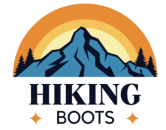
-large-full.webp)

